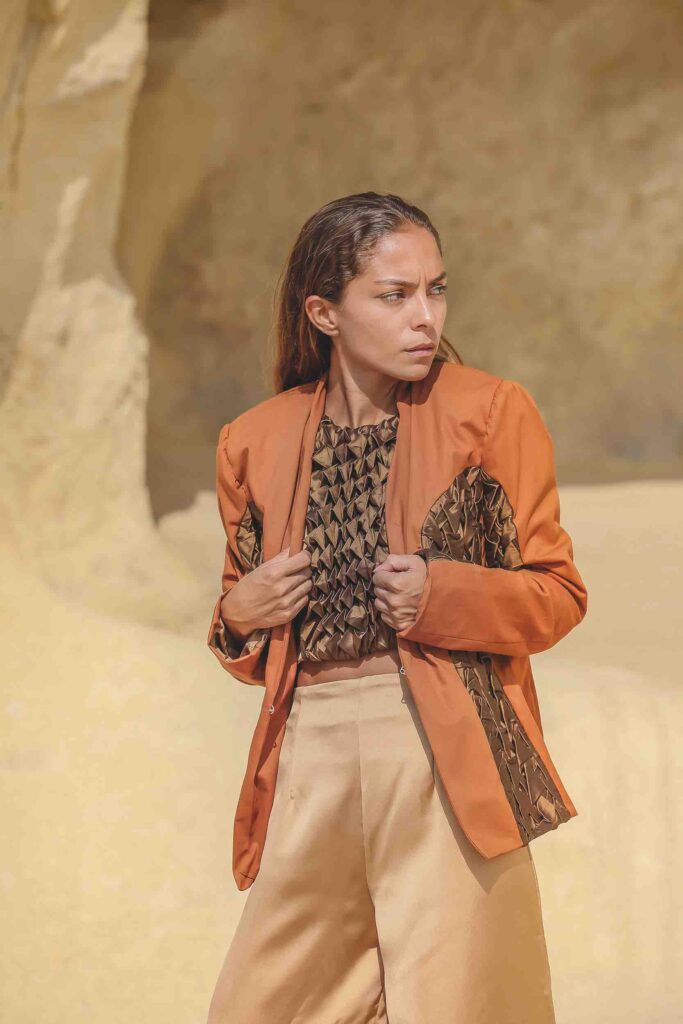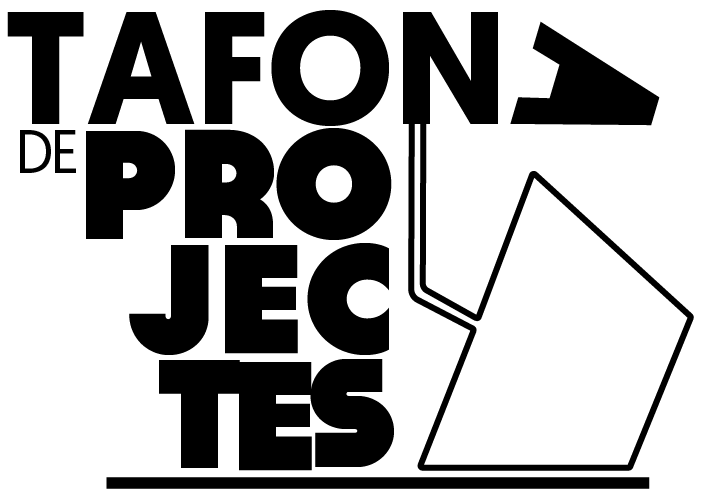
Namatu
El nom de la col·lecció significa “mare terra” en una llengua indígena, i pren com a font d’inspiració l’art precolombí, un art que ha influït profundament en la cultura colombiana. La col·lecció intenta representar, mitjançant la combinació de teixits lleugers i transparents com la gasa, juntament amb teixits més estructurats, els diferents estats i formes que pot adoptar la terra, com ara en el cas de la ceràmica, que passa d’estar blanda i maleable a ser totalment rígida amb l’ajuda del foc.
Manipulant els teixits, es pot representar aquest canvi d’estat de la matèria, transformant-los de teixits llisos i sense forma en una tessela de estructures geomètriques que fan referència al simbolisme precolombí. Amb l’aplicació de calor, aquesta tessela es converteix, igual que succeeix amb l’argila i la ceràmica, en una forma amb una estructura definida. Per tant, es pot dir que el teixit seria l’argila i la peça final de roba, amb la manipulació, seria l’obra acabada de ceràmica.
–
The name of this collection, which means “mother earth” in an indigenous language, takes inspiration from pre-Columbian art, which has deeply influenced Colombian culture. The collection aims to represent the various states and forms that the earth can take, such as in the case of pottery, which transitions from a soft and malleable state to a completely rigid one with the help of fire, through the combination of lightweight and transparent fabrics like chiffon and more structured fabrics.
By manipulating the fabrics, the collection portrays this change of state, transforming smooth and shapeless textiles into a tessellation of geometric structures that reference pre-Columbian symbolism. With the application of heat, this tessellation, just like clay and ceramics, becomes a defined and structured form. Therefore, the fabric can be seen as the clay, and the final manipulated garment as the finished ceramic piece.




